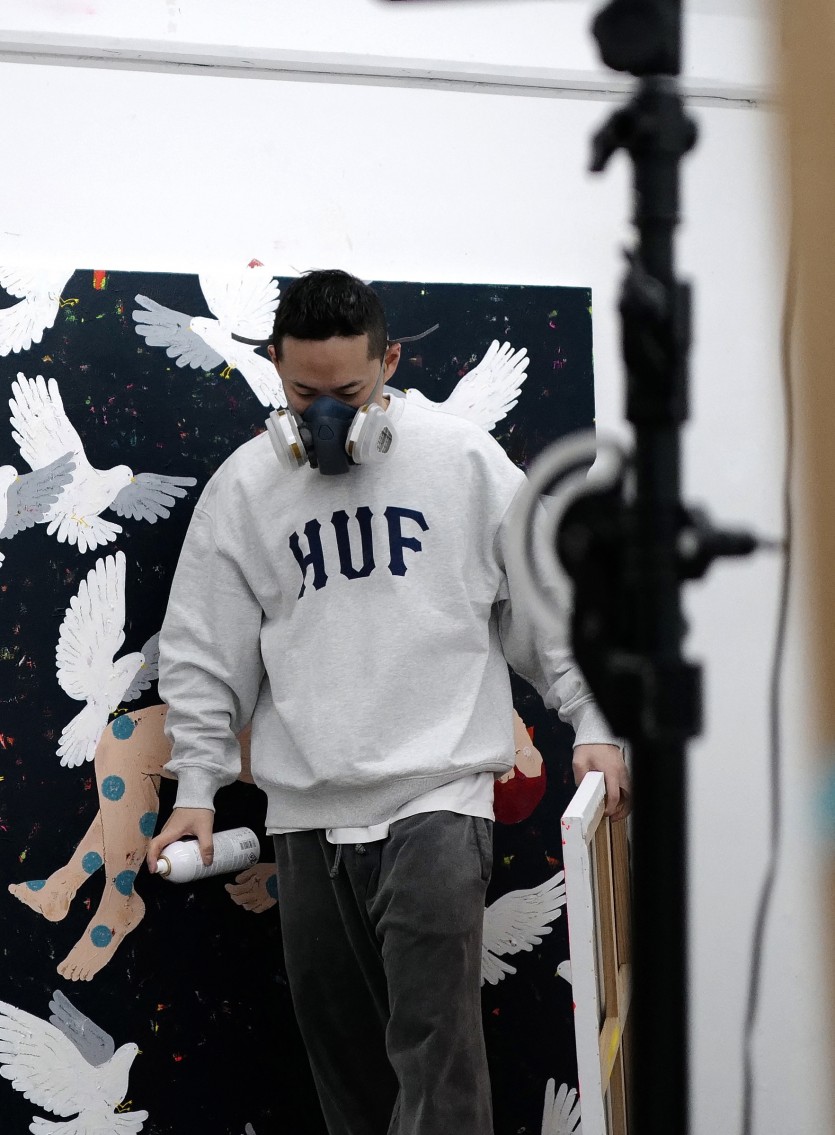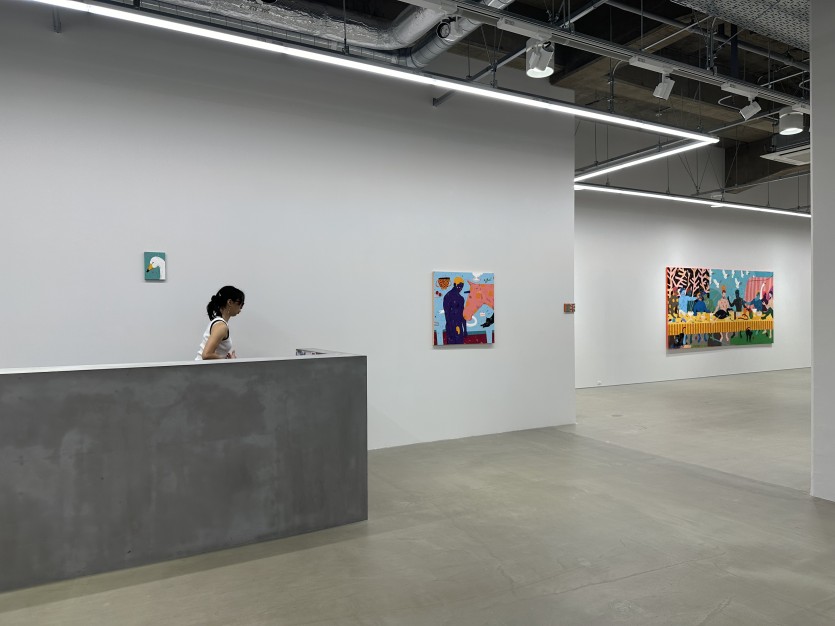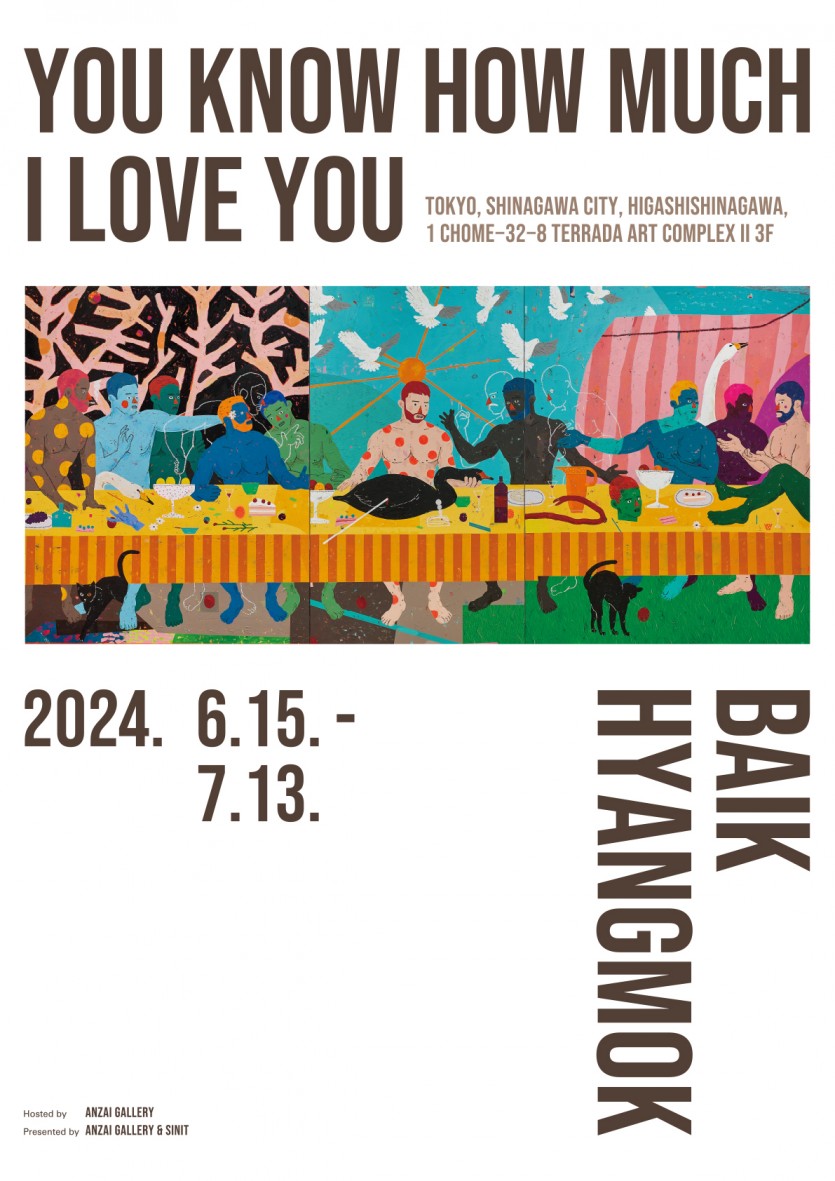Projects Hyang Mok Baik - Solo Exhibition 'You Know How Much I Love You.'
본문



Hyangmok Baik - Solo Exhibition
Hosted by Anzai Gallery
Presented by Sinit
Artist's Note
We all dream, and within these dreams, we encounter objects,
spaces, and people that oscillate between familiarity and un-
familiarity. In dreams, these elements seem unfamiliar with
some familiarity, sometimes familiar with unfamiliarity. Upon
waking, we grasp at fragments of what happened in the limin-
al space between consciousness and unconsciousness. These
fleeting memories, which we call dreams, are the narratives
I endeavor to depict on a flat surface, weaving together the
scattered remnants.
The subjects of my work predominantly stem from the peo-
ple and moments that populate my everyday life. They are
inspired by the people with whom I share close or distant
relationships, the conversations we have, and my everyday
routine, that, much like a hazy, peculiar dream, are vividly de-
picted in my work. Each element within my work is reconfig-
ured and rearranged through my imagination to form a story.
The objets in my story are simply drawn with lines, partially
colored or erased. They represent the subjects in my dream.
My dreams are sometimes clear, and yet at most times vague,
inaccurate, I draw these feelings I get from them, sometimes
coloring, and sometimes erasing, into lingering afterimages of
my dreams.
My intention is to evoke a sense of déjà vu in the viewers,
prompting them to feel as though they have experienced a
'strange dream.' This dream feels familiar due to its resonance
with past experiences, yet remains unfamiliar, like an old
memory slipping beyond the grasp of recollection.
Essay by Sinhee Kim CEO/Sinit
The realm of Hyangmok is shrouded in mystery. I usually detest sim-
ple categorization of any kind; nevertheless, some artworks seem to
belong to a group designed to provoke active viewer engagement,
with the audience's interaction being necessary for the artwork's
completion. This brings to mind the philosophical query: "If a tree
falls in the forest and no one is there to witness it, has it truly oc-
curred?" Conversely, and reluctantly defining as the other group of
artworks, Hyangmok's creations exude an aloofness, relegating view-
ers to the role of passive spectators, granted only fleeting glimpses
into an artist’s enigmatic world.
From the inception of his work, Hyangmok's creation appears com-
plete. His painstaking method of layering numerous colors, stripping
them away, and then repeating the process, is intricate and chal-
lenging to fathom, even with his explanations. I am captivated by
the chaotic beauty of this process and even the disarray of his stu-
dio. Each layer seems to encapsulate the artist's genuine emotions,
reflecting his real-life experiences and encounters, whether physical
or psychological.
In his recent works, intact figures appear more frequently, yet boldly
severed body parts or seemingly incongruous background patterns
persist, each with its own narrative. Some inspirations, like the "The
Last Supper" in his latest body of works, are clear, but many pieces
emerge from a confluence of perspectives and ideals, creating en-
tirely new realities. Although Hyangmok is not religious, his work
often delves into the grand origins of religion or myth, featuring
powerful protagonists devoid of antagonists.
When I first encountered his work "What Happened in 1990" at
an art fair, the abruptly severed figures immediately arrested my
attention. The meticulously layered dark and deep background
seamlessly incorporated two severed heads and an arm. Offering
no explanation, I had to stop and be curious. I imagined a dialogue
between the two faces, crafting my own narrative. It was my initial
introduction to Hyangmok's oeuvre. Despite my typically conserva-
tive approach to collecting, I found myself repeatedly returning to
the piece, ultimately deciding that I needed to own a fragment of
Hyangmok's world.
Since then, I have become a devoted fan, a determined collector,
and now, an aspiring partner in collaborative projects. I cherish the
privilege of being the first to witness his diligently created works for
each new exhibition.
Recently, Hyangmok sent me a book titled "Whale," a story about
women enduring violent lives. I was tempted to ask him which char-
acter he identified with or if he merely remained an engrossed read-
er of the raw, violent narrative.
I chose not to ask. My curiosity about Hyangmok's world is ev-
er-present, and it is a true pleasure and privilege to be able to
inquire about the nuances of his work—why the men possess dif-
ferently colored noses and genitals, or why his swans are achingly
beautiful yet ominous. Yet again, I refrain from asking, preferring to
comprehend Hyangmok's world through the language he selects to
define himself.
I am profoundly grateful to be a small part of his journey.

